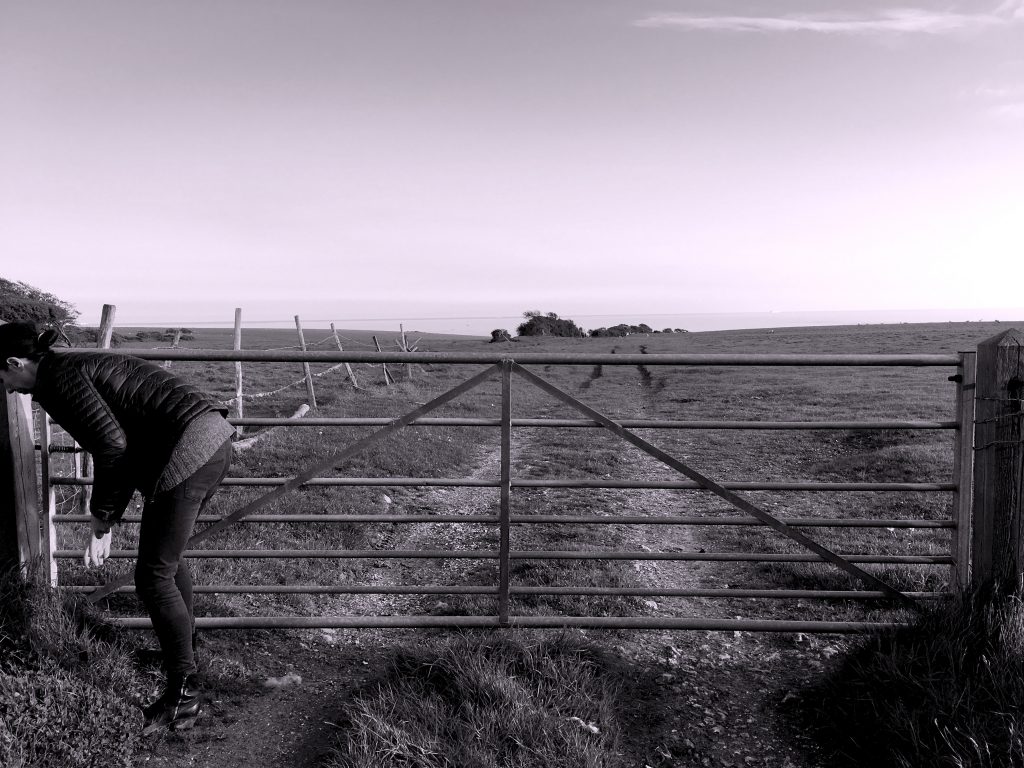Lookering
Lookering – a word not found in the Oxford English Dictionary – is the act of going into a field to check the welfare of your livestock. Sweet, verdant June and the verges are frothing with creamy cow parsley. The barns, barren of livestock, rattle desolately in the warm summer breezes, dusty reminders of the daily winter bedding-up […]
Lookering – a word not found in the Oxford English Dictionary – is the act of going into a field to check the welfare of your livestock.
Sweet, verdant June and the verges are frothing with creamy cow parsley. The barns, barren of livestock, rattle desolately in the warm summer breezes, dusty reminders of the daily winter bedding-up and feeding that is now a thing of the past. Every ewe, lamb, teg, ram, cow, bullock, heifer, bull and calf on the farm is now outside, tearing at the tender summer grass then basking contented in the sun and seeking shade in the balmy hedgerows. This is lookering season and I have been allotted my fair share of fields and numbers of stock contained within them for the day.
The farm in the Ladybird books (which, until I married into the trade, was my own preconception of the average farm) was a farmhouse surrounded by a patchwork of fields and everything was in its rightful place close to home. Here are the cows and calves in their field, over there are the ewes with their lambs. Here is the farmer’s wife leaning out of the kitchen window sprinkling corn for the hens. There is the farmer in his jacket and tie, mending an already immaculate fence. The lookering of this papery family could be done from an upstairs window of their picturebox cottage. None of those paper sheep would ever do anything so unruly as to get their heads stuck in a fence, nor would 20 thirsty cows all drink from a water tank at the same time and bust the ballcock.
The reality of our farming is rather different. With fields dotted here and there from Pevensey Bay to the east and Alfriston to the west, as far south as Friston and as far north as Hailsham, a good proportion of the lookering time is spent travelling the busy trunk roads of the area. One moment the Land Rover and I are like any other school run partnership in the rush hour, snaking along the road in a long slither of vehicles, the next we are bumping up an unmade track, renegades from the urban sprawl. Ahead of us lies the gate – our portal into a totally different world. Down come the windows. Off goes the radio. National politics, world events, natural disasters, terrorist incidents – all are suddenly irrelevant as the world shrinks to the boundaries of this set of fields and the trials, tribulations and concerns of its occupants.
Even the gates have personalities – all have different fastenings, different keys different foibles – there are the smooth runners that are a pleasure to do business with, there are the malicious ones that wait until you are back in the cab before they gently swing closed on you once more, and these are the no-nonsense bruisers that need to be bodily lifted and dragged painfully across the rutted mud. The gates to the outside world have locks – many slightly rusted that need a drop of oil to turn smoothly, oil that of course I’ve forgotten to bring with me again. Here up on the hill above Alfriston, today’s gate is fastened with the aid of what looks like a giant charm bracelet with the same awkward t-bar and loop fastening as the one I was given as a baby. I wonder idly what giant charms I could fix to this chain to make it more decorative? As I turn back to the truck a fat fieldmouse scuttles across the grass in front of me and dives into the hedgerow.
Somewhere in these 200 acres are 100 ewes and 172 lambs; at the moment there is no sign of them. First, I circle a water tank filled to the brim, no puddles, no hiss, no outward sign of an expensive leak. Then we’re moving on and the field drops steeply away from us, so steeply that at one point, with my heart in my mouth, I think about those triangular road signs with the percentage gradient in them and wonder what this percentage would be – 35%, 50%? Wouldn’t it be better represented as a face in a warning triangle portraying different levels of terror – from mildly alarmed to abject meltdown?
And there finally are the sheep, sheltering in the lee of the hill and with purpose in my newly galvanized heart we are driving towards them, finger poised. If only they keep still we might have a chance to count them. My hopes are quickly dashed. Today they’re in a mood. Sometimes we can drive right by and the ewes will be too lazy to get to their feet, simply casting one maternal eye over their respective lambs and a wary one at the truck. Today they have the wind under their tails and they’re trotting off, scattering in all directions, a mass of fleece and ear and bouncing udder. I will have to be content with counting rough numbers and laboriously driving along each hedgerow checking for a snagged coat and a topsy turvy torso. Then finally we’re accelerating up, up, up to the most southwesterly point to drive along the high ridge with its waving grass stalks that are now just coming into seed head. Here we are on top of the world. There are no sheep up here to looker but we stop, the sea far below us, to look, to listen, to sniff at the sweet pasture with its salt seasoning. A mile away, the ferry, shortly out of Newhaven, is gliding into deeper, bluer waters. I turn off the engine and we sit in our silence, the truck and I, listening to the insistent scattered soundtrack of a dozen skylarks. Far below us, the sheep, now tiny figures, are re-grouping and, all excitement over, dropping their heads to graze.
I look down to the piece of paper on the passenger seat. The Sanctuary Field next – one bull, sixteen cows, sixteen calves. We drive on.
More events
-
Live Music from The Hot Club of Jevington
Date: April 26, 2024
From: 7.30 pm
Next concert at The Sussex Ox Friday 26th April 2024 -
Pub Quiz
Date: April 29, 2024
From: 8.00 PM
The next quiz is on Monday 29th April. Teams of up to 6, entry is £1 per person. Booking is essential.



